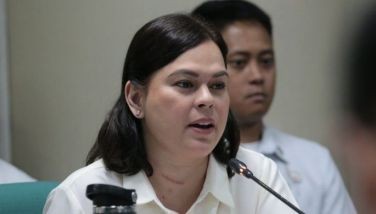IMF sets condition for RP's withdrawal of stimulus programs

MANILA, Philippines - The Philippine economy, as measured by the gross domestic product (GDP), needs to start expanding by an average of 5.5 percent before the government can fully withdraw its stimulus programs, the International Monetary Fund (IMF) said.
These programs, put in place when the global financial crisis struck in late 2008, are meant to cushion the economy from the impact of the worldwide turmoil. These include additional funds for infrastructure spending and monetary measures such as keeping key interest rates at record lows.
The IMF said governments, including the Philippines, should be careful in withdrawing its exit strategies so as not to disrupt economic growth.
Finance Undersecretary Gil Beltran, who attended the IMF’s Spring Meetings in Washington last week, said a 5.5-percent economic growth would be safe enough for the government to finally start withdrawing its stimulus programs.
The 5.5 percent is the country’s average economic growth the past five years. In 2009, the economy expanded by a measly 0.9 percent compared to the 3.8 percent recorded a year earlier. This year, the government expects the economy to grow between 2.6 percent to 3.6 percent.
Beltran quoted IMF officials as saying that countries need to prepare for a proper and gradual exit.
“The IMF agreed that government cannot afford to continue with their stimulus programs,” he said.
The Philippine government, for instance, has been incurring a wider budget gap because of the global financial crisis.
In the first quarter of the year, it has incurred a budget gap of P134.2 billion, wider than the P119.7 billion recorded in the same period a year ago.
The government is looking at a budget gap of P293 billion by yearend, just slightly narrower than the P298.5 billion incurred in 2009.
The wider deficit is largely because of the additional spending the government has been implementing to pump-prime the economy because of the global financial turmoil.
On the monetary side, the Bangko Sentral ng Pilipinas (BSP) has also kept policy rates steady as part of its liquidity enhancing measures.
The BSP slashed its key policy rates by 200 basis points between December 2008 to July 2009 to cushion the impact of the global financial crisis. This brought the overnight borrowing rate to a record low four percent and the overnight lending rate to six percent.
The BSP has kept its rates at record lows for seven straight policy-setting meetings since July last year but has continued to unwind crisis-related measures adopted in November 2008 to release liquidity into the financial system to support domestic economic activity to cushion the global economic meltdown.
- Latest
- Trending





























